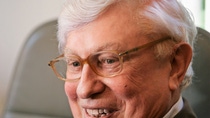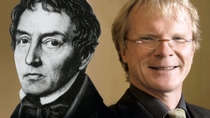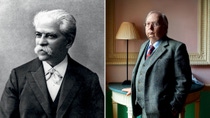News e comunicati
Pioneering thinker - then and now:
Ammonia synthesis
Pioneering thinker – then
Carl Bosch synthesises ammonia on an industrial scale in 1913.

Pioneering thinker – now
Professor Dr. Gerhard Ertl discovered the mechanism behind ammonia synthesising.
Information
How ammonia synthesis works.
The reactive partners in the Haber-Bosch process are hydrogen and nitrogen, both diatomic gases. In order to turn these into ammonia, the strong triple bond in the nitrogen molecule and the single bond in the hydrogen molecule both have to be broken. This requires a lot of energy – or a catalyst like iron, which lowers the amount of activation energy. But what happens on the surface of the iron? Professor Dr. Gerhard Ertl discovered that the splitting of the nitrogen is the decisive step. The nitrogen molecule (N2) interacts so strongly with the electrons on the metallic surface of the catalyst that the bond between the two atoms in the nitrogen molecule is weakened and eventually breaks. This leaves both nitrogen atoms with three free electrons, enabling each atom to bond to three hydrogen atoms. At the end of the reaction chain, this combination forms ammonia as the final product. Chemical reactions on catalytic surfaces such as this one play an important role in many industrial applications, from mineral fertilizers to exhaust gas scrubbing.

